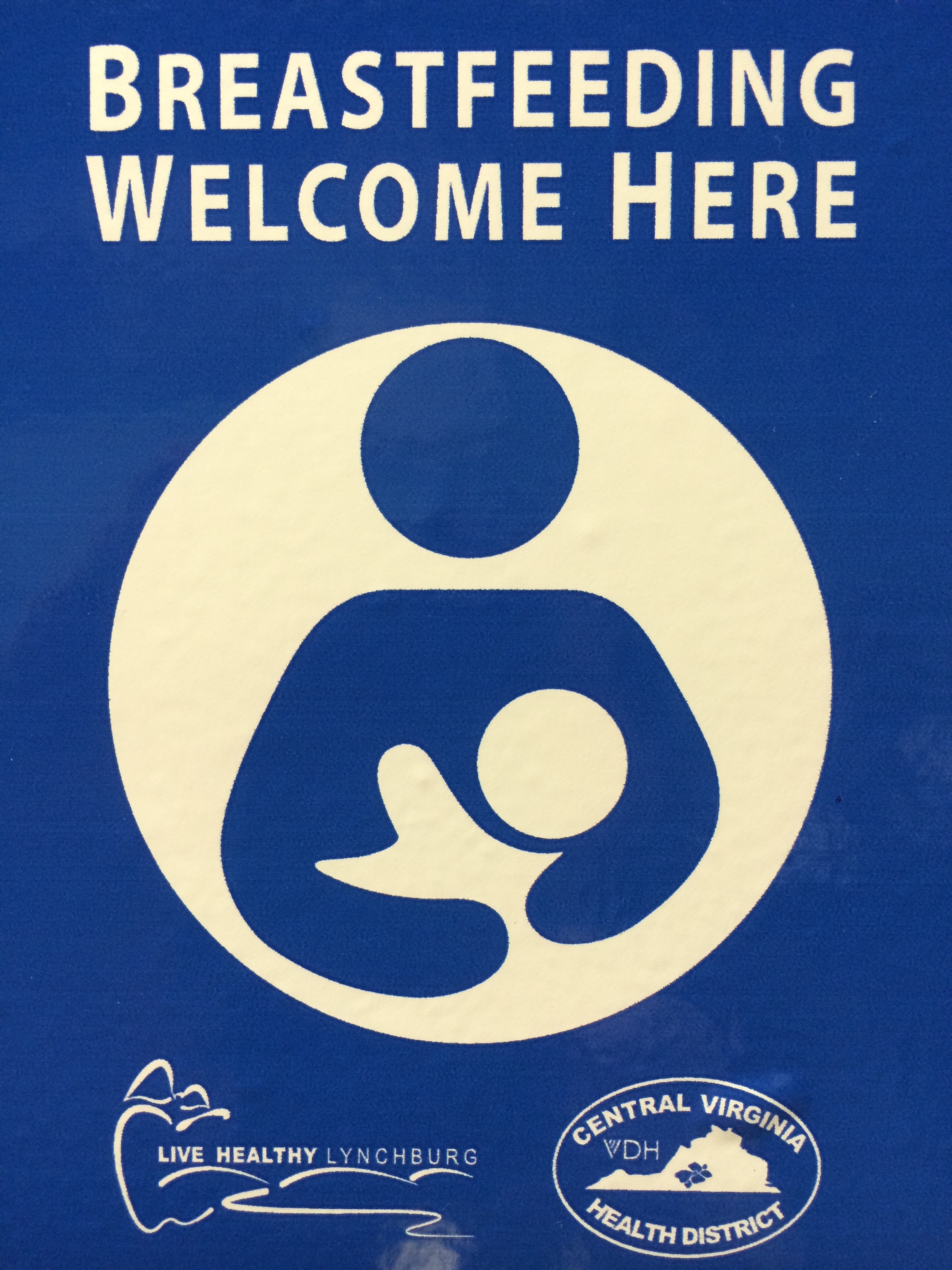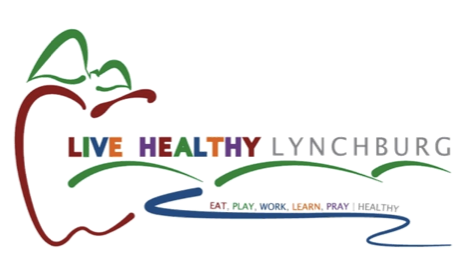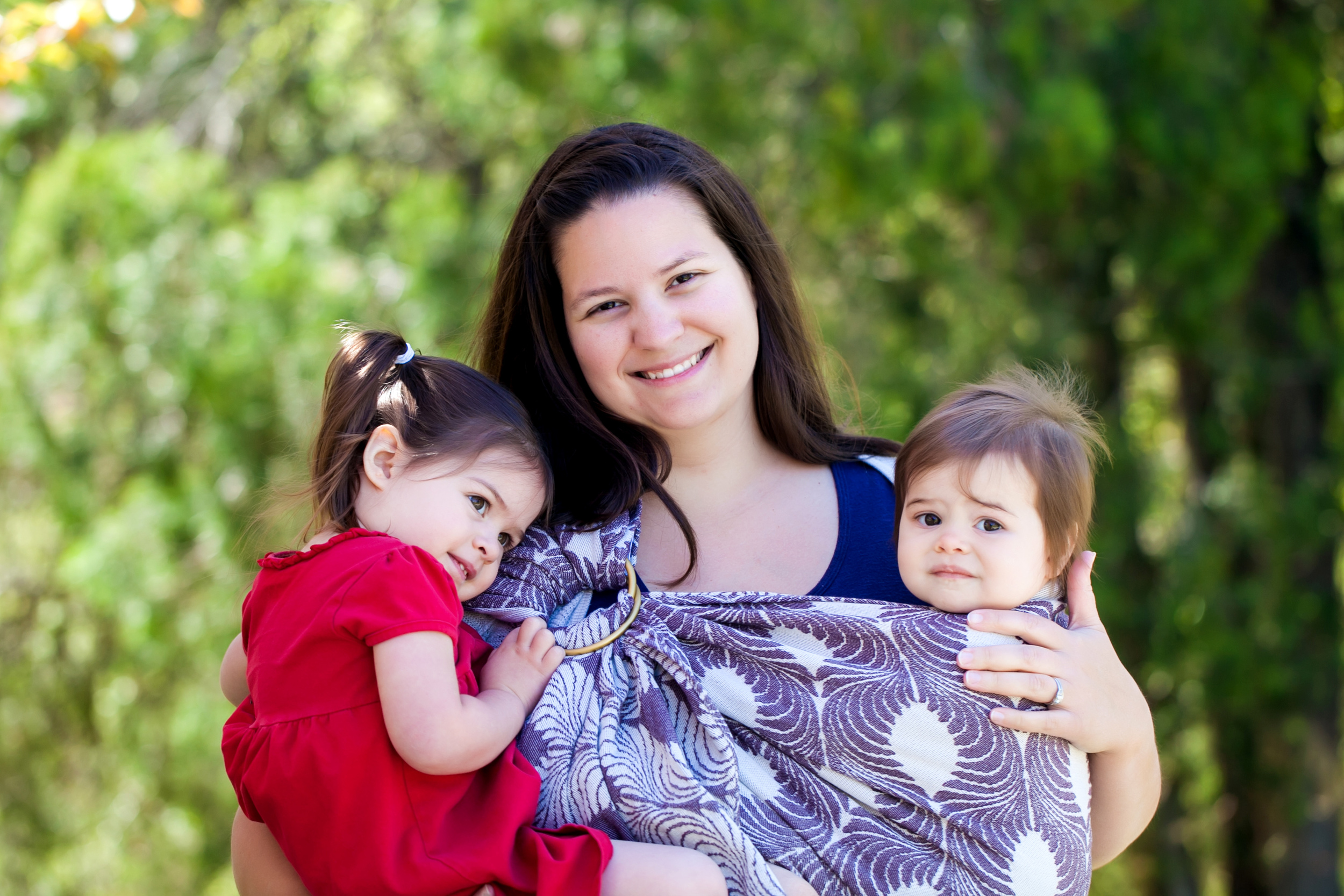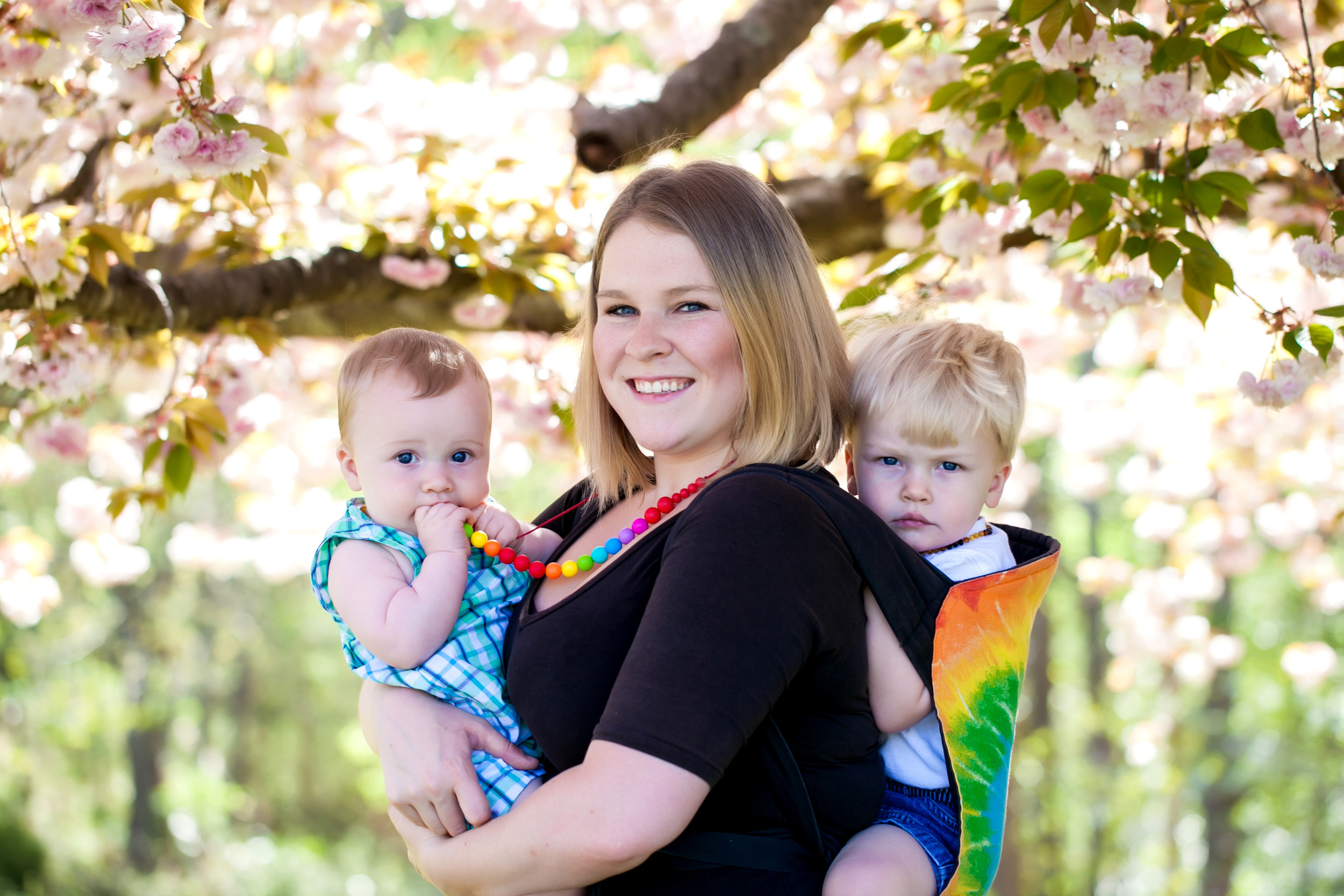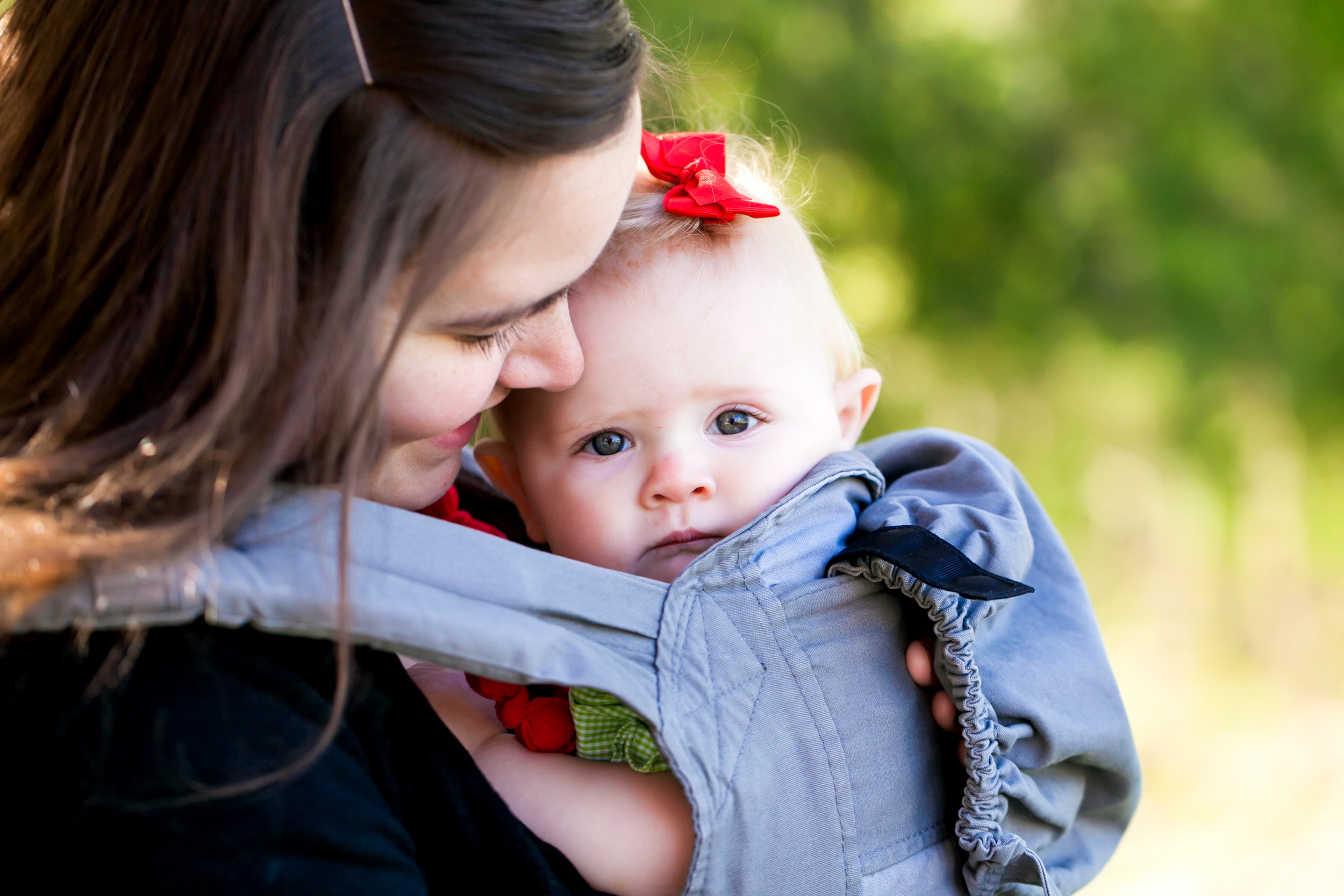 Our chefs: Melissa Kan, Kerissa Williams, and Laura Walker, and our moderator: Erica Wolfe.
Our chefs: Melissa Kan, Kerissa Williams, and Laura Walker, and our moderator: Erica Wolfe.
Today's cafe is a "discovery" format, with hands-on participation from the audience. In this instance, we'll be taste-testing! Erica will provide some background information on feeding babies and toddlers, and recipes will be included for the foods available today. Baby food recommendations seem to be constantly evolving as our understanding of nutrition changes, and so we remind you to always check with your pediatrician before making decisions about your child's diet.
The AAP's current Infant Feeding Tips are as follows:
- Breastfeeding: Exclusive breastfeeding for the first year (see specific language from “Breastfeeding and the Use of Human Milk”)
- Bottle Feeding: Avoid bottle propping; Only breastmilk or formula in bottle unless otherwise directed by physician
- Food Introduction: Introduce solid foods around 6 months of age; Expose baby to a wide variety of healthy foods; Also offer a variety of textures
- Healthy Snacking: After 9 months, offer 2-3 healthy and nutritious snacks per day; Maintain fruit and vegetable consumption after finger foods are introduced
- Foster Self-feeding: Babies are encouraged to use spoons and fingers to feed themselves; Babies are encouraged to drink from a cup starting at 6 months of age; Parents recognize hunger and satiety cues
- Healthy Drinks: Babies should drink breastmilk or formula for the first year of life; Try to avoid introducing juice until child is a toddler. If juice is introduced, wait until 6-9 months and limit consumption to 4-6 ounces; Avoid introduction of sugar-sweetened beverages
The website Wholesome Baby Food is a great resource for new parents. There are suggestions for when and how to introduce new foods, as well as recipes and advice. When making homemade baby food, they recommend the following:
- ALWAYS consult your pediatrician prior to beginning any new food for your infant. Discuss making homemade baby food with your pediatrician. Learn more about infant feeding at the World Health Organization and the American Academy of Pediatrics websites.
- THINK about following the 4 day wait rule when introducing a new food to baby - offer your baby the same new food for 4 days to test for allergies to that food. This applies even when you are making homemade baby food. Never introduce more than 1 new food at a time when first beginning solid foods.
- ALWAYS use clean hands, clean cooking utensils, preparation surface(s), pots/pans etc when making and and preparing homemade baby food. Cleanliness and Food Safety is a MUST when making homemade baby food.
- REMEMBER that all babies are different and will not like/tolerate the same foods or food textures. DO NOT DESPAIR! You should be willing to experiment with baby solid food for your baby. Offer your baby different foods, use different ways of preparing those baby foods and be willing to have a huge store of patience.
As we begin introducing babies to solid foods, it can be difficult to know how much to feed them. Remember that breastmilk or formula should still be the main source of nutrients. The purpose of introducing solid foods before one year of age is to get baby used to new tastes, textures and consistencies of food, which will later help them develop a healthy and balanced diet.
How Much Food Should My Baby Eat?
Remember the catchy phrase, "Food Before One is Just for Fun".
It is most important to ensure that your baby is still receiving proper amounts of breast milk and/or formula. Early solid foods are meant more for practice than nutrition.
4-6 Months: Always offer solids after bottle or breast. Baby may eat anywhere from 1-3 tablespoons of food at 1 or 2 "meals"
6-8 Months: Formula and/or Breast Milk is still most important at this age and stage. Babies in this range may be just starting solids so the above for 4-6 Months would apply. Some babies may be eating up to 8 ounces of solid foods between 2-3 "meals" during a day.
8 Months and on: Many babies will be eating 3 "meals" per day at this stage; including a grain, fruit, veggie and a meat or protein source such as eggs.
-Pay attention to your baby's cues as your baby's feeding patterns will change daily and may be affected by the goings-on around him. Your baby will eat just the right amount for YOUR baby. Watch his signs for being both hungry and full.
-Pay attention to diaper output and have your child weighed regularly if you are concerned about weight gain.
How Do I Prepare Early Foods?
Mash It: Many foods can be mashed with a fork or potato masher. Foods such as ripe bananas, avocados and soft cooked foods such as sweet potato, apples or squash can all be made with a fork or potato masher. Using a fork or masher will depend on what type of texture your baby requires.
Use a Food Mill: Cut the food into pieces. Put the cooked food through the food mill. (The skin and seeds will stay in the mill.)
Chop or Grate Baby’s Food: Foods can be finely chopped or grated (with a cheese grater), then mixed with liquid. This is great for babies who are self-feeding.
Food Grinder: A food grinder can be used to grind up foods for your baby. This is a simple way to prepare meats and more textured foods. The food grinder is also great to take on vacation or when dining out with baby. You can quickly and easily grind up fresh baby food in your hotel or at the restaurant.
Blender or Food Processor: Add your cooked food to your blender or food processor and blend to the consistency your baby requires. If needed, add liquids such as breast milk, formula, water or the cooking water from the food you cooked to thin out the baby food.
Sieve or Strainer to Finish Homemade Baby Food: Many parents like to use a sieve or strainer to further thin homemade baby food. These gadgets may be particularly useful for foods that have stubborn skins, such as peas and green beans. Put the food into the sieve or strainer and push it through into a clean bowl. Repeat the process as many times as you need.
**The preferred method for cooking baby foods are steaming, baking, roasting and pressure cooking because these methods all have the least amount of nutrient loss after cooking.
Rice Cereal
You CAN skip cereals altogether if you want to. Many sources now recommend beginning a baby with fruits or an orange veggie like sweet potato as first food(s). Studies are now revealing that grains may not be good starter foods for baby to digest. Starting with a fruit like avocado or banana or a veggie like sweet potato is a great alternative to cereal(s).
There is no medical need to start baby out with cereals; unless your pediatrician has indicated your baby may need extra iron due to less than overall good health or due to being pre-term. In this instance, you should use a fortified commercial infant cereal and consult with your pediatrician on the best foods to offer as "first" foods; you may be surprised to hear your pediatrician recommend adding meat to baby's diet!
Dr. Frank Greer, from the Committee on Nutrition, American Academy of Pediatrics recently noted in an interview that "Rice cereal has traditionally been the first complementary food given to American infants, but “Complementary foods introduced to infants should be based on their nutrient requirements and the nutrient density of foods, not on traditional practices that have no scientific basis."
"Rice cereal is a less than perfect choice for the first complementary food given to infants. Rice cereal is low in protein and high in carbohydrates. It is often mixed with varying amounts of breast milk or formula. Although most brands of formula now have added iron, zinc, and vitamins, iron is poorly absorbed—only about 7.8% of intake is incorporated into red blood cells." - Read Rice Cereal Can Wait to learn about the new thinking from the AAP.
"For most babies it does not matter what the first solid foods are. By tradition, single-grain cereals are usually introduced first. However, there is no medical evidence that introducing solid foods in any particular order has an advantage for your baby." Source: 09/2008 - Starting Solid Foods (Copyright © 2008 American Academy of Pediatrics)
Always use brown rice when making homemade cereals, it's just more nutritious!
Baby Led Weaning (BLW)
Baby Led Weaning means letting your child feed themselves from the very start of weaning. The term was originally coined by Gill Rapley, a former health visitor and midwife.
**Language clarification: “Weaning” is meant in the British sense, not the American. In the UK, ‘weaning’ means ‘adding complementary foods’, whereas in the States it means ‘giving up breastfeeding’.
According to the most recent research most babies reach for food at around six months, which is also the time that mothers are being encouraged to wean* by their pediatricians, in accordance with the WHO guidelines. Baby Led Weaning (BLW) is skipping thin and runny purées and not feeding your baby with a spoon.
Baby Led Weaning means offering your baby (age appropriate) foods that are soft-cooked and cut or mashed into small easily manageable pieces. You may choose to offer your baby a large hunk of apple that she can easily hold and gnaw on or a bowl full of soft cooked mashed apples; the choice is yours. The foods are then given to your baby to eat without being pureed and without being spoonfed. You do the cooking, the cutting or mashing and the offering of the foods and your baby does the rest. It is important to note that your baby should be in control of what he is eating and you should never actually feed him by putting the foods into his mouth!
Recipes
With that advice, Erica reminds us that baby food does not have to be homemade. Give it a try, and find the balance that works for your family. Finally, recipes! Below are links to the recipes we sampled this morning.














 Our chefs: Melissa Kan, Kerissa Williams, and Laura Walker, and our moderator: Erica Wolfe.
Our chefs: Melissa Kan, Kerissa Williams, and Laura Walker, and our moderator: Erica Wolfe.
 Our panelists: Stephanie Fournier (PT, DPT, WCS, CLT-LANA), Jilayne Luckey (PPMD Support Group Leader), Debbie Perdew (DONA) and Lisa Wixted (LLL Leader and Yoga Instructor), and our moderator, Lauren Barnes.
Our panelists: Stephanie Fournier (PT, DPT, WCS, CLT-LANA), Jilayne Luckey (PPMD Support Group Leader), Debbie Perdew (DONA) and Lisa Wixted (LLL Leader and Yoga Instructor), and our moderator, Lauren Barnes.
